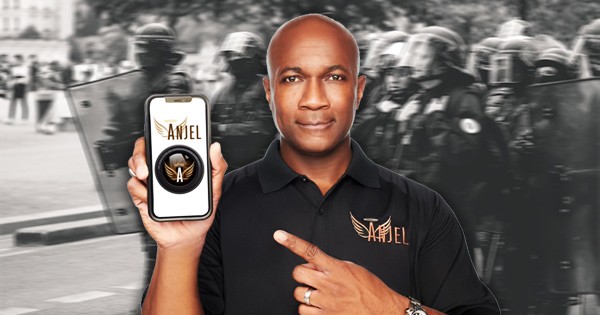Last May, ABC News ran a story with the headline “Oklahoma governor signs ban on teaching critical race theory.”
Of course, Gov. Kevin Stitt did no such thing. Critical Race Theory is not mentioned in H.B.1775, the bill the Oklahoma Legislature passed, and Stitt signed. Instead, this and other similar bills try to thwart constitutional free speech, particularly any discussion about the country’s sordid racial history. Under the false guise of racial equality bans the teaching that any race “bears responsibility for actions committed in the past.”
By that standard white ownership of enslaved Black people played no part in the Civil War.
The statute also bans the teaching of race-related concepts that would make “any individual feel discomfort. guilt, anguish, or any other form of psychological distress on account of his or her race or sex.”
Oklahoma politicians would have us believe that white males who wrote “All men are created equal” had nothing to do with race or sex when Blacks were enslaved, and women could not vote. And that the truthful teaching of this history should not cause any psychological discomfort to any students on account of his or her race or sex. They believe if we don’t talk about it, it didn’t happen.
Critical Race Theory (CRT) has nothing to do with the nationwide movement to prohibit and ban free speech and books. Politicians are passing these “facially unconstitutional” laws under the rubric of CRT merely because the phrase sounds ominous, and it is being taught in universities, bastions of liberalism in their opinion. Ironically, while CRT teaches none of these things, the radical right is right to fear it because it does pose some serious questions about what is wrong with our society.
What Critical Race Theory Teaches?
Why does massive racial inequality continue to exist? Why does it persist when legislation has outlawed discrimination in education, public accommodations, employment, and in a host of other civil rights areas? CRT seeks answers to these questions. Beginning in the 1980s, a group of scholars, primarily Black, began to cast doubt on the conventional wisdom that our laws are “colorblind” in their effects on society. Instead, they came to theorize that many of the so-called “value-neutral” laws, in reality, stacked the odds against Blacks and contributed to racial injustice and inequality.
As these legal studies continued, almost exclusively in law schools, a body of tenets emerged to explain the overall phenomenon. CRT is a study of how policies, programs, and laws contribute to the suppression of Blacks in our society. The Encyclopedia Britannica says the theory has been used to deepen our understanding of issues such as “poverty, police brutality and voting rights violations.” The American Bar Association stated in “A Lesson on Critical Race Theory” that CRT “acknowledges that the legacy of slavery, segregation, and the imposition of second-class citizenship on Black Americans and other people of color continue to permeate the social fabric of this nation.”
One powerful illustration of this type of suppression through inequality is the racial wealth disparity. White households have ten times the wealth of Black families. This is mainly because Blacks have been shut out of the opportunity to build up wealth through homeownership equity. Richard Rothstein in the Color of Law documents how federal housing loan programs were systematically denied to Blacks well past World War II. This was accomplished through racial zoning, red-lining, and court enforcement of private homeowner covenants which excluded Blacks.
Later in the century, Blacks were lured into “contract sales” with no equity build-up until the mortgage was completely paid off or beginning in the 1990s with subprime mortgages at two to three times the rates of whites. Subprime mortgage loans typically had higher interest rates and closing costs but with low or zero equity build-up for many years. When the subprime mortgage crisis occurred in 2006-14, Blacks lost disproportionally more significant portions of their home equity than whites. Similarly, there were higher foreclosure rates for Blacks. “Nationally, over eight percent of Black people lost their homes in the wake of the recession,” cited Habitat for Humanity. And there was almost no assistance from the federal government. This systemic exclusion and victimization were irrefutable examples of how laws and state-sanctioned programs were not necessarily “colorblind” in their impact.
None of This
The conservative media would have none of this. Instead, they would set their sights on the culture wars. In a broadcast in late summer 2020, Fox News claimed diversity training in the federal government was divisive anti-American propaganda. Trump quickly aligned himself with this view during the presidential campaign. CRT became a catch-all phrase in which white society was allegedly being “scapegoated” by the elite Black academia. A whole movement almost immediately sprang up, claiming kids were being indoctrinated in schools to believe America is an irredeemably racist society. Trump even issued an Executive Order prohibiting this “pernicious and false belief…many people are pushing.”
States quickly swung into action, passing laws prohibiting the teaching of this doctrine in schools. Or in other words, they needed to fix the phantom problem they had created. Oklahoma was among the first of a handful of states to do so. Currently, 30 largely Republican-dominated states have either enacted or are considering bans. Oklahoma went further.
The Oklahoma State Department of Education established an elaborate system of rules to enforce this law. Signed into effect by Stitt in September 2021, these rules allow any public member to file a complaint concerning these provisions and others. Complaints are then required to be “investigated” and resolved in accordance with the law and the rules. Violations can result in teacher and school administrators’ suspension, revocation of teaching licenses, or loss of school accreditation. Schools are required to report quarterly the number of complaints and their disposition in a six-step categorization.
There were swift legal challenges to these dangerous laws in many states. In October. the Oklahoma chapter of the American Civil Liberties Union and a diverse group of students and educators filed the first lawsuit in the nation challenging state CRT legislation. The case was filed in the United States District Court. The lawsuit claims that the law, among other things, is “facially unconstitutional,” and “By erasing the perspectives of historically marginalized communities and restricting the robust exchange of ideas, H.B. 1775 prevents students from accessing information that will help prepare them to be active participants in democracy.”
The fate of active participants in democracy is precisely what is at stake here.
John Neal, the author, is a Sand Springs native. He is well-versed in urban renewal, its uses and abuse as a former city manager in Oklahoma and departmental consultant for the city of El Paso, Texas. In 2008, he was that city’s planning director when the city won multiple awards for its planning accomplishments. He is now retired and resides in Austin, Texas.











